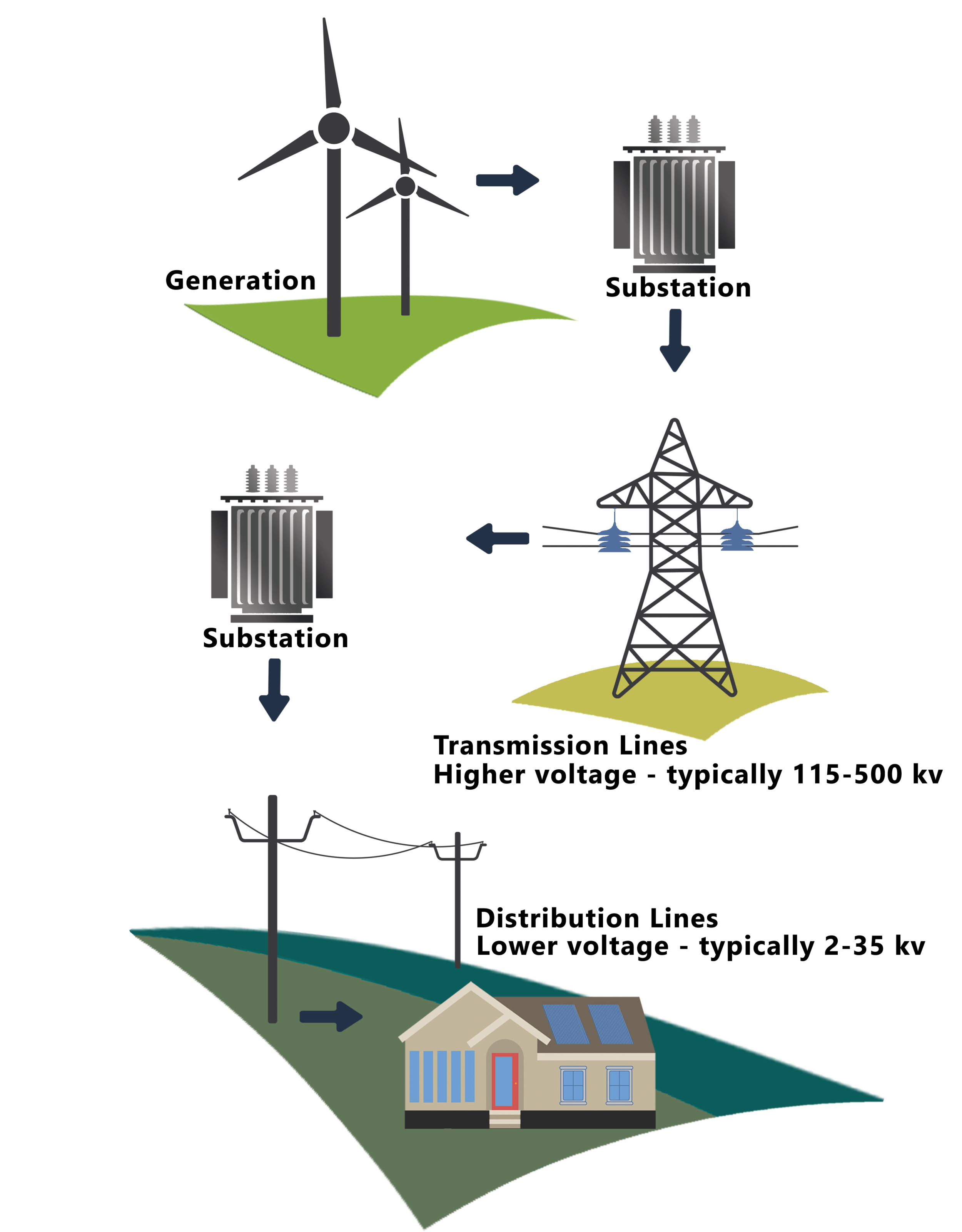Transmission and Distribution
Electricity Transmission
Transmission lines move large volumes of high-voltage electricity across long distances and are needed to connect large distant generating resources to electricity customers (also known as load centers). Transmission lines create a networked system by interconnecting a variety of load centers to generating resources. Most generators are located long distances from the towns, cities, counties, and rural areas they serve – for example, customers along Oregon’s coast often receive their power from distant generation east of the Coast Range. This transmission network is generally referred to as “the grid,” and more specifically referred to as the “Bulk Power System,” or the “Bulk Transmission System” when discussing high-voltage transmission lines.
Electricity Supply Chain
Transmission vs. Distribution Line
Connected to the other side of transmission lines and step-down transformers are the distribution lines, which carry lower voltage electricity shorter distances (i.e. the last few miles, to the grid’s distribution system customers). These are the wires that connect customers to the grid and supply them with electricity. The transmission and distribution systems are distinguished by the voltage level of the wires — a measurement of the capacity of the lines to carry energy. The transmission network is comprised of higher voltage lines – typically 115 kV to 500 kV (including lines that connect generation to the bulk transmission system – “gen-tie” lines); the distribution network is comprised of lower voltage lines typically between 2 kV and 35 kV. Transmission lines are carried on larger towers, such as the ones paralleling Interstate 5 through much of the Willamette Valley, while distribution lines are often carried on smaller wooden poles like those running up and down the streets of many residential neighborhoods.
The Western Electricity Coordinating Council (WECC) is the regional entity responsible for promoting reliability and security across the area shown in the map above. WECC coordinates with approximately 345 member organizations.
Energy Facility Siting Council visiting the Boardman Solar Energy site.
ENERGY FACILITY SITING AND PERMITTING
New energy projects in Oregon are typically proposed and developed by utilities or independent developers. The federal government also owns and operates large scale energy projects in Oregon. For example, the Bonneville Power Administration, a federal government agency, owns and operates much of the high-voltage electric transmission system in Oregon and other neighboring states; and the U.S. Army Corps of Engineers and U.S. Bureau of Reclamation own and operate hydroelectric dams on the Columbia River. The State of Oregon regulates the siting of certain energy projects, but does not own or operate energy projects.




